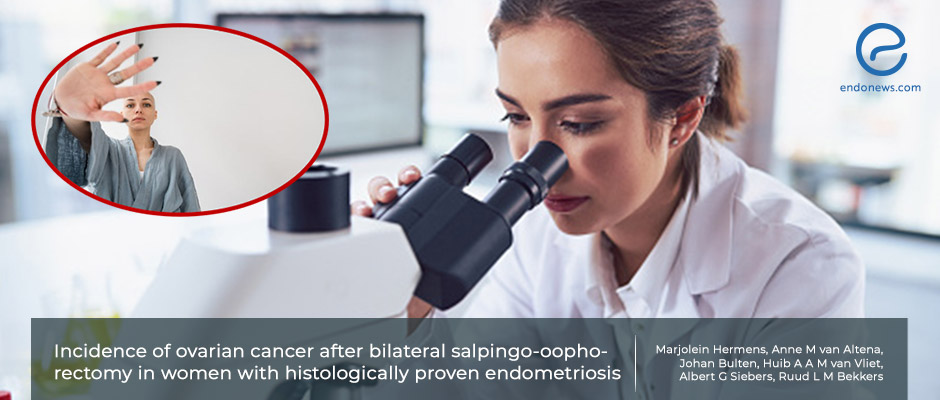The incidence of ovarian cancer after histologically diagnosed endometriosis.
May 26, 2022
"Reduced risk of ovarian cancer after removal of both adnexa in women with endometriosis", the study reveals.
Key Points
Importance:
- Ovarian cancer occurs at a relatively younger age in women with endometriosis
- These tumors are more likely to be histopathologically "endometrioid" or "clear-cell" types rather than serous ovarian cancer.
Highlights:
- There is a decreased incidence of extra-ovarian cancer in women with histopathologically proven endometriosis after BSO.
- Furthermore, the incidence of ovarian cancer is significantly reduced when compared to women with histologically proven endometriosis without BSO.
What's done here:
- A retrospective cohort study was set up to estimate the ovarian cancer risk of women with endometriosis based on pathological records in the Nederlands.
- Around eight thousand women with histologically proven endometriosis or adenomyosis after bilateral removal of both adnexa (BSO) were selected from the nationwide pathology database.
- From the same database, more than 42-thousand women who were diagnosed with endometriosis and did NOT have adnexal removal were also selected.
- As a control group, 132.500 women who were pathologically diagnosed with a benign nevus with follow-up were evaluated.
- The authors obtained and evaluated the histopathological diagnosis of ovarian, fallopian tubes, or extra-ovarian/peritoneal cancer diagnosis information from the above cohorts.
Key Results:
- There were 9(0.1%) cases of extra-ovarian cancer in the "BSO" cohort, 170(0.4%) cases in the "endometriosis without BSO cohort", and 444(0.3%) cases in the "benign nevus (control)" cohort.
- In women with histologically proven endometriosis, the incidence of extra-ovarian cancer risk was decreased to less than the background population after BSO.
- When the incidence of ovarian cancer was compared in women with endometriosis, there was a significant reduction in the incidence of ovarian cancer in the "BSO" group, compared to "endometriosis without BSO".
Lay Summary
Ovarian cancer has the highest mortality rate among gynecologic cancers. Furthermore, these patients are generally diagnosed in advanced stage due to their non-symptomatic nature.
Therefore, preventative strategies have enormous importance for the management of ovarian cancer.
Dr. Hermens and colleagues from the Department of Obstetrics and Gynecology of Catharina Hospital, Eindhoven, the Netherlands, aimed to assess the incidence of ovarian cancer in women with histologically proven endometriosis in a retrospective national cohort study. The authors compared two histologically proven endometriosis cohorts, with or without removal of both adnexa; and a control cohort of women who never had a pathological diagnosis of endometriosis but benign nevus.
The number of extra-ovarian cancers was determined, and the number of person-years at risk was evaluated for each cohort, then the age-adjusted incidence rate ratios were calculated by an age adjustment based on the age at diagnosis adjusted to a Dutch standard population. The authors found extra-ovarian cancer only in 9 women who made up 0,1% of the BSO cohort. On the other hand, the percentage of diagnosed ovarian cancer in endometriosis women without BSO, and in women with benign nevus cohort were 0,4% and 0,3% respectively.
This study is the largest, and only the second to investigate the result of surgical treatment in women with endometriosis to the subsequent ovarian cancer risk. The conclusion of the authors of this seminal study is "BSO could be a preventive strategy for future ovarian cancers in patients with endometriosis". The details of this paper can be found in the journal named "Fertility and Sterility".
Research Source: https://pubmed.ncbi.nlm.nih.gov/35300832/
bilateral salpingo-oopherectomy ovarian cancer extra-ovarian cancer risk age-adjusted IRR endometriosis.

